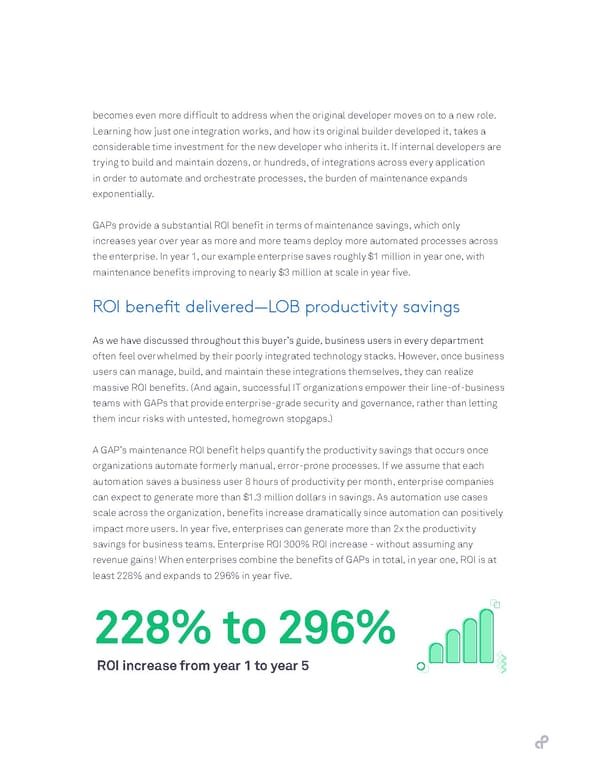becomes even more difficult to address when the original developer moves on to a new role. Learning how just one integration works, and how its original builder developed it, takes a considerable time investment for the new developer who inherits it. If internal developers are trying to build and maintain dozens, or hundreds, of integrations across every application in order to automate and orchestrate processes, the burden of maintenance expands exponentially. GAPs provide a substantial ROI benefit in terms of maintenance savings, which only increases year over year as more and more teams deploy more automated processes across the enterprise. In year 1, our example enterprise saves roughly $1 million in year one, with maintenance benefits improving to nearly $3 million at scale in year five. ROI benefit delivered—LOB productivity savings As we have discussed throughout this buyer’s guide, business users in every department often feel overwhelmed by their poorly integrated technology stacks. However, once business users can manage, build, and maintain these integrations themselves, they can realize massive ROI benefits. (And again, successful IT organizations empower their line-of-business teams with GAPs that provide enterprise-grade security and governance, rather than letting them incur risks with untested, homegrown stopgaps.) A GAP’s maintenance ROI benefit helps quantify the productivity savings that occurs once organizations automate formerly manual, error-prone processes. If we assume that each automation saves a business user 8 hours of productivity per month, enterprise companies can expect to generate more than $1.3 million dollars in savings. As automation use cases scale across the organization, benefits increase dramatically since automation can positively impact more users. In year five, enterprises can generate more than 2x the productivity savings for business teams. Enterprise ROI 300% ROI increase - without assuming any revenue gains! When enterprises combine the benefits of GAPs in total, in year one, ROI is at least 228% and expands to 296% in year five. 228% to 296% ROI increase from year 1 to year 5
 IT Buyers Guide Page 16 Page 18
IT Buyers Guide Page 16 Page 18